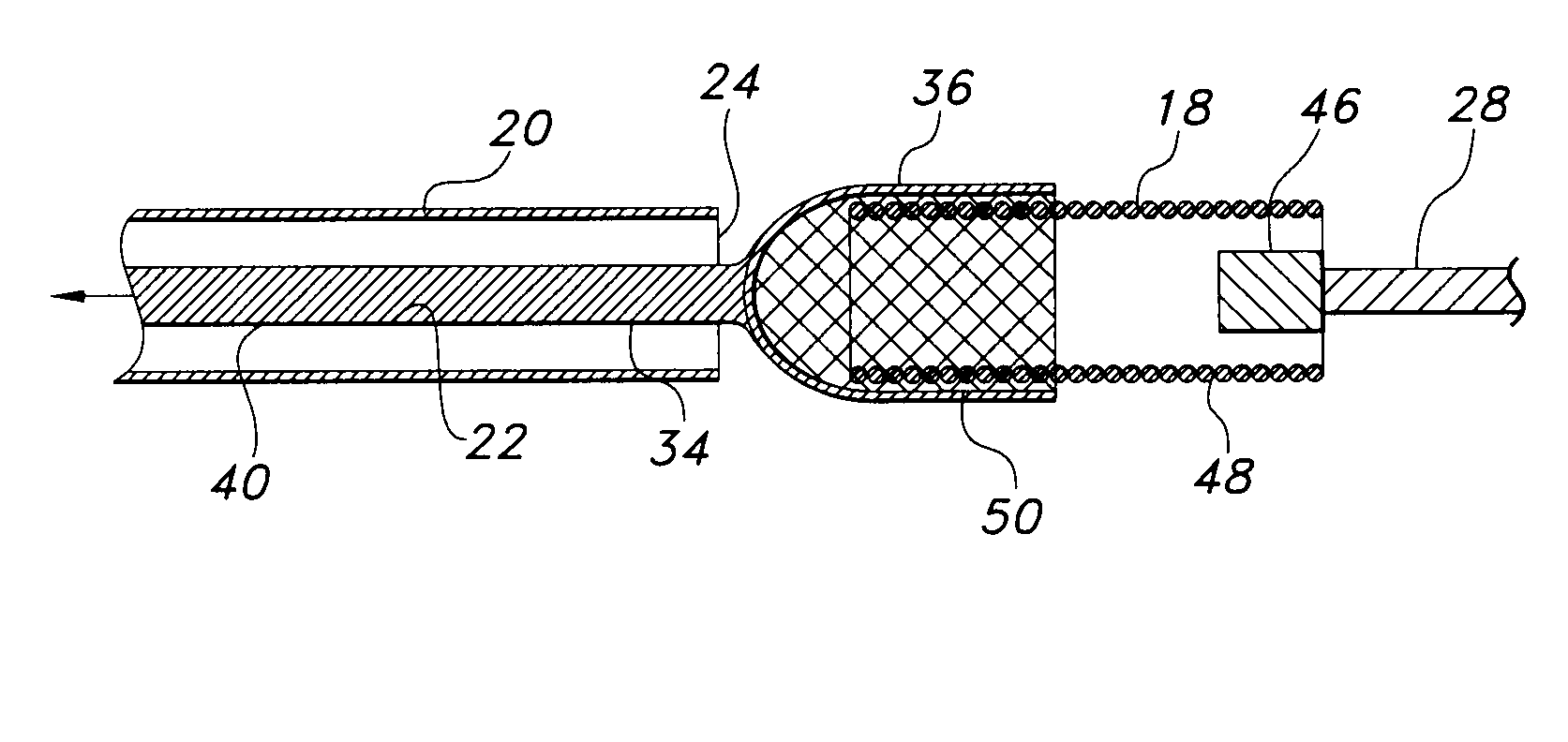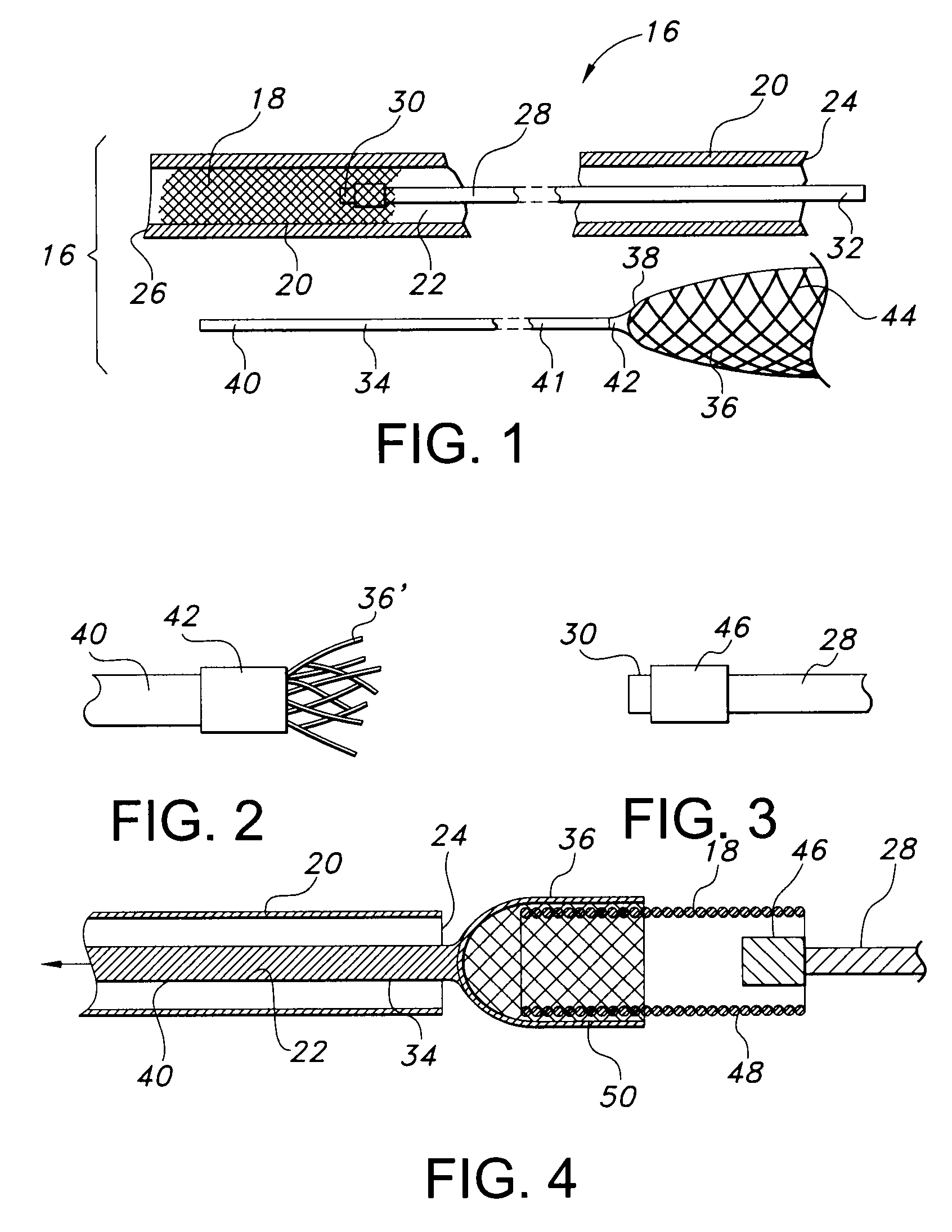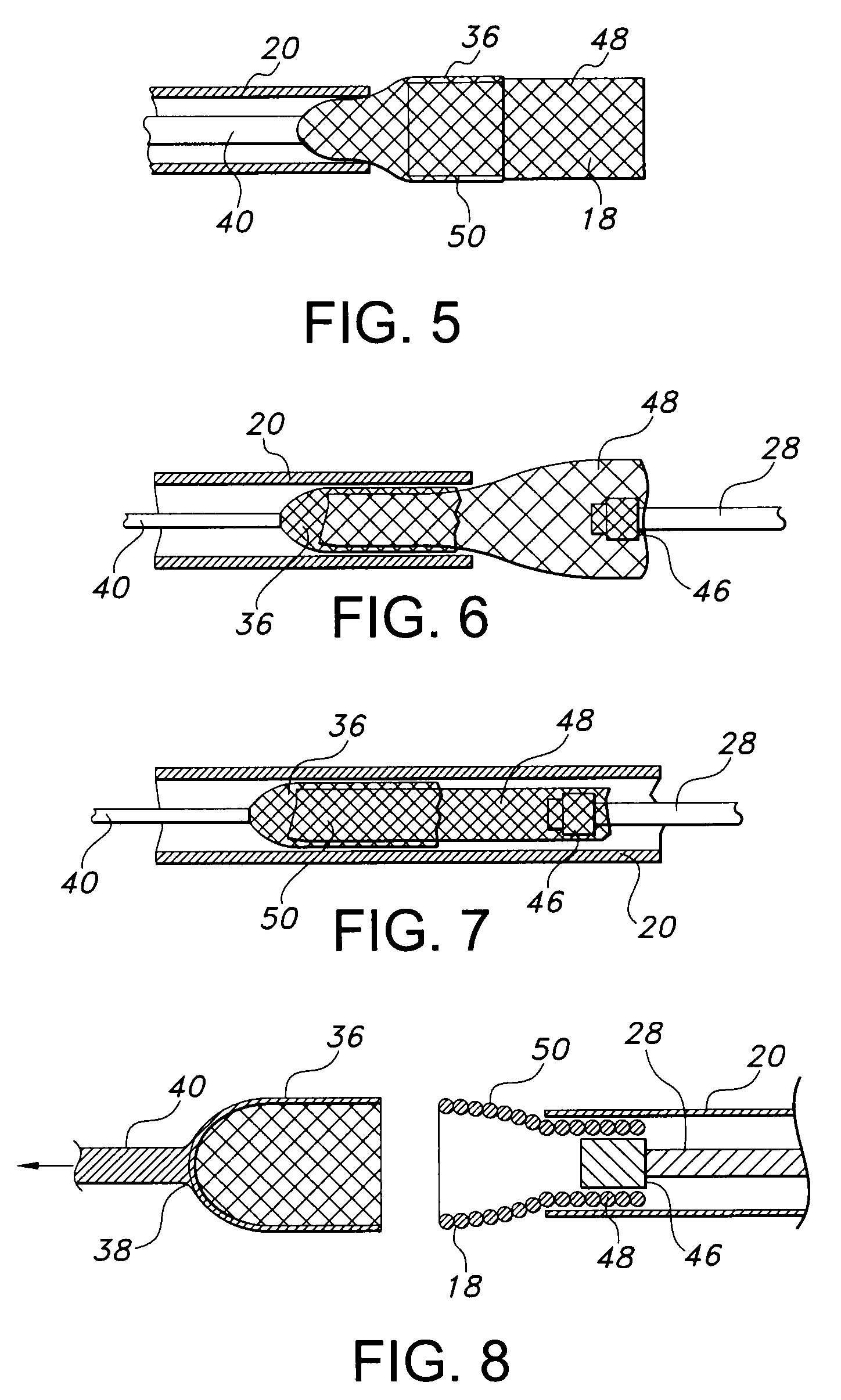Prosthesis loading delivery and deployment apparatus
a technology of prosthesis and loading device, which is applied in the field of stents, stentgrafts and other intraluminally implantable prostheses, can solve the problems of time-consuming and difficult procedures, and achieve the effect of improving the quality of life and reducing the risk of complications
- Summary
- Abstract
- Description
- Claims
- Application Information
AI Technical Summary
Benefits of technology
Problems solved by technology
Method used
Image
Examples
Embodiment Construction
[0057]Turning now to the drawings, there is shown in FIG. 1 a stent loading and deploying system 16 for loading and deploying a radially self-expanding stent 18. While system 16 and alternative embodiment systems are discussed primarily in connection with deploying radially self-expanding stents, it can be appreciated that these systems may be used to deploy other implantable devices as well, e.g. balloon-expandable stents, grafts, and stent-grafts. As used herein, the use of the term stent may refer to and / or comprise any implantable prosthesis for use in a body lumen.
[0058]System 16 employs several components, some of which are involved in loading stent 18 and others are involved in stent deployment. The later components include an elongate, pliable outer catheter or tubing 20 constructed of a biocompatible polymer. Suitable polymers include, but are not limited to, polytetrafluoroethylene (PTFE), polypropylene (PP), or polyethylene terephthalate (PET). A central lumen 22 runs axi...
PUM
 Login to View More
Login to View More Abstract
Description
Claims
Application Information
 Login to View More
Login to View More - R&D
- Intellectual Property
- Life Sciences
- Materials
- Tech Scout
- Unparalleled Data Quality
- Higher Quality Content
- 60% Fewer Hallucinations
Browse by: Latest US Patents, China's latest patents, Technical Efficacy Thesaurus, Application Domain, Technology Topic, Popular Technical Reports.
© 2025 PatSnap. All rights reserved.Legal|Privacy policy|Modern Slavery Act Transparency Statement|Sitemap|About US| Contact US: help@patsnap.com



